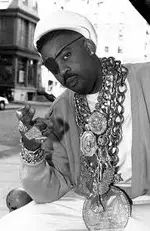Didn't they start out with silver coinage and continually decreased the percentage of silver until it was something like 5%?
Something like that. Then copper began to circulate more widely, and then the copper got smaller. Toward the end there (circa 300-400 AD), those little coppers were significantly smaller and thinner than a US dime, and the artwork on them really was generally atrocious. It unfortunately reminds me of our own coinage in some ways.
I think we should produce coins that have beauty and longevity. If they cost more to make, then make $5, $10, $20, and $50 coins. But out of precious metals.
The US government would dearly love to replace bills with coins, which is why they're still pushing those $1 coins that consumers still refuse to use. Coins are significantly less expensive to mint than bills are due to longevity, but they just don't seem to catch on in America. If it's bigger than a quarter, Americans want nothing to do with it. It's a bit of a shame really, as using higher denomination coins wouldn't just benefit the government, but it would also benefit us detectorists as well. I'd be pretty damned happy to dig clad if it was worth $5 per coin!
There won't be a return to coins made of precious metals that are meant to circulate. Even in America's relatively short history, there are numerous instances where fluctuations in the price of metal made coins circulate oddly or not at all, or get melted down, or leave the country entirely. A good example of what can happen when coins are minted of metals and are valued (at least in part) on the intrinsic value of that metal can be seen in US silver coins, copper Lincolns, and nickels - if the value of the metal suddenly goes above the face value of the coin, melting and hording stop the circulation of the coins, invalidating the whole concept of money in the first place.
Put another way, if we c even mint cupronickel coins without people melting them down when metal prices shifted (in the case of the nickel, where a law was required to discourage people from melting them down and/or exporting them), minting them out of noble metals, for the purpose of circulation, is probably impossible. It's a different world.
I totally agree with you in concept though. I look at these new presidential dollar coins and the state quarters, and then I look at liberty and Barber coins and...I don't know. The art on the new ones seems a bit cartoonish to me. That art on the Barbers and the liberties looks like art in the classical sense. A coin certainly doesn't
have to look nice to do its job, but it's a matter of pride, isn't it? I just don't feel all that proud about modern American coins.
I have a collection of corroding zincs also.
Does any body know what we can soak them in to stop the corrosion process so they don't keep disintegrating ?
Zincoln disintegration is caused by galvanic corrosion. Removing the electrolyte (in our case, water with impurities added) should stop the process, but that may be difficult due to the porous nature of the rotted zinc inside and humidity in the air and such. A soak in distilled water and then a forced drying in an oven should end it, or at least slow it way down. Packing them in an airtight container with sufficient desiccant packets should work at least as well and is probably easier.
Agreed on opinions about plastic coins - the smaller denominations (cents, and probably nickels as well) should have gone to plastic years ago. There's just no way to make a metallic cent for less than a cent these days, and nickels aren't far behind.











